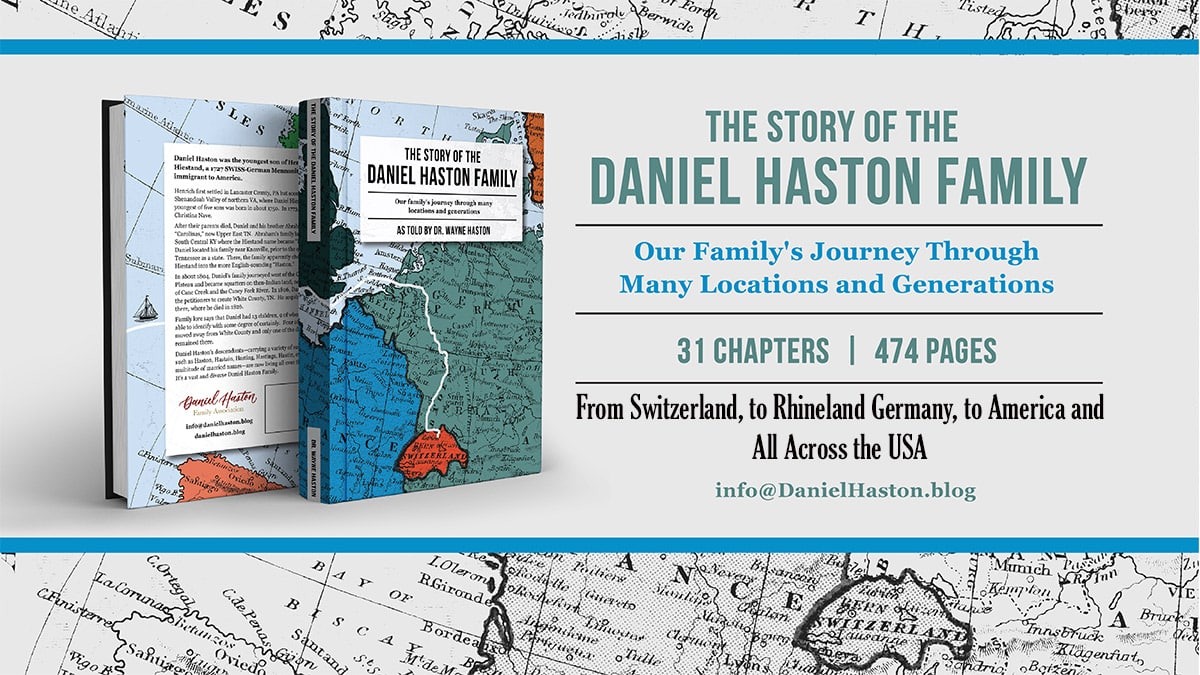Major Bob Haston - Prisoner of War in Stalag Luft III

German POW Camp Stalag Luft III

Stalag Luft III was a POW camp near Sagan, Germany that was operated by the German Air Force (Luftwaffe). It is one of the best-known WWII German POW camps, largely because of two famous escapes–the “Wooden Horse” escape of October 29, 1943, and the “Great Escape” of March 24-25, 1944. On that March night, 76 Allied air force officers escaped through an elaborate tunnel but only six made a “home run”–escaped successfully. Fifty of the unsuccessful escapees were later shot (murdered) by the Gestapo on the direct orders of Adolph Hitler. The 1963 Hollywood film, “The Great Escape,” was based on the March 1944 escape, with quite a bit of “artistic license.”
Like other German POW camps, Stalag Luft III was built in a location to discourage Allied bombers from attacking a strategic military site. Sometimes the “human shields” were schools or churches. A POW camp was a prime shield. The small town of Sagan (now Zaga, Poland) was an important railroad junction and Stalag Luft III was a shield to try to protect the railroad from Allied bombers.
After Bob Haston was shot down (and rescued) by the German military, he was initially taken to Oflag XI near Spangenberg, a POW camp for Allied officers. He was sent to a POW hospital for medical care, then to Stalag Luft III near Sagan (then in Germany).
“I believe that because of my injuries, I went through interrogation without being questioned and was sent to the Prisoner of War Hospital in Obermassfeld Germany. After my hospital stay, there were no more searches. I was able to carry the dollar in my pocket for the remainder of the war.” -Bob Haston
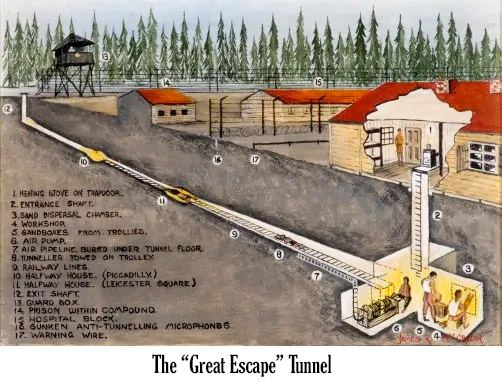
Bob arrived at Stalag Luft III not long after the “great escape” had occurred. When he arrived, German tanks were rolling over the grounds in an attempt to collapse any tunnels that might still be undiscovered. Building tunnels was a popular activity in which prisoners engaged in Stalag Luft III. More than 100 escape tunnels were started or completed there during the time this POW camp was in operation! What is especially remarkable about the Stalag Luft III tunnels is the fact that the site was specifically chosen because of the sandy soil there which made digging tunnels difficult. But crafty POWs found ways to deal with the sand.
In the early part of the war, Germans were generally careful about following the policies of the Geneva Convention of 1929 with Western Allied prisoners. So, conditions there were reasonably tolerable for these prisoners, especially in the early stages of the war when Hitler’s army seemed to have the upper hand. When you came into the camp, you were shown a Red Cross “care package” of sorts. It had dehydrated milk, tooth brushes, blankets, small amounts of food, clothing, cards, etc. and all you had to do to get it was smile for the camera, register your information into the Germany system, and have these “wonderful, happy-go-lucky, I’m being treated so well” radio interviews to be sent back to your folks back home. If you didn’t smile … or weren’t “happy” for the radio … you starved to death.
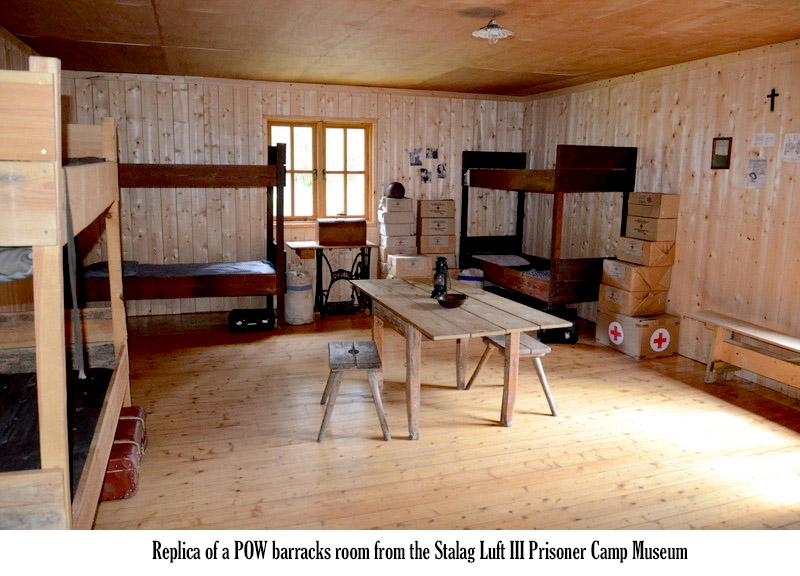
But, the Other Side of the Fence - Stalag Viii C
In Stalag Viii C, the tale was not so "happy go lucky." (and I say that in the most ironic/sarcastic way possible) That camp was made up of mainly prisoners from the eastern front: Russians, Yugoslavians, Czechs, Pols, and other Baltics ... oh, and some French. Now this camp was no Hilton ... Since Stalin hadn't signed the Geneva Convention, mainly because he wanted to torture Nazis ... and his own people who rose up against him ... well, because of that Hitler said "everything is fair game with these guys." If they were running low on food, they'd pick people to starve to death from Stalag Viii C. If they had too few beds, they hanged people from Stalag Viii C. If they had too few barracks to fit people, they let the prisoners freeze to death outside. If the prisoners looked at the guards cross eyed, they got a bullet to the gut (not the head), and made to sit there and wallow in pain for days until they eventually died. If the guards' dogs were starving ... Stalag Viii C supplied a good diet of human flesh. It was about as close to a Jewish death camp, as you got in the POW world, except not on the same scale. Over 12,000 men died in that camp in atrocious ways.
Brad Britain, Grandson of Bob Haston
Brad continued: My grandfather was right across the fence from the Russian side, and between the severe wounds of his own, a significant lack of food, the example of the other 50 people that were shot, the sounds from the Russian side, and focusing entirely on surviving the harsh Polish winter, my grandfather was just hoping to make it out of this place alive. He never attempted to escape, and wasn’t sure if he would have even survived a successful attempt.
That does NOT mean that the Germans were all Nazi’s. The reason my grandfather, and many of the other men in those camps lived was because of the Germans in the area. When there wasn’t enough food, there were several guards that would regularly give the prisoners food and supplies. They would also give them their dogs to eat (not the Russian eating ones … those were kept on the Russian side). The Germans (not the Nazi’s, though the Nazi’s “allowed” this) organized the Red Cross efforts to provide some moderate supplies to the prisoners. The Nazis did, however, use this as an opportunity to feed the propaganda machine.
“In January of 1945, I along with thousands of other POWs were then marched to Nuernberg and on to Moosburg, where we were liberated by General George S. Patton’s 3rd Army on April 29, 1945.” -Bob Haston
The "Death March"
On the evening of 27 January 1945, the German garrison at Stalag Luft III announced the camp’s immediate evacuation due to the proximity of Soviet forces. The Germans distributed Red Cross food parcels to the prisoners, and in the early hours of 28 January the prisoners began a five day forced march to Spremberg in freezing, snowy weather. Their overnight accommodations on the journey included barns, a large church and a factory. Source

Grandson, Brad Britain, relayed the story of his grandfather’s “Long March” (also known as the “Death March”) and the final months of his captivity as a POW:
At the end of his incarceration, (January, 1945) he and his fellow prisoners were forced to march in excess than 200 miles. This march was accomplished in spite of 40° to below 0° temperatures resulting in Robert's shoes (he found a pair of shoes that were a size 8 when he wore a size 11) freezing to the ice because they thawed from body heat when he stopped marching. He weighed 187 pounds when captured and 111 pounds when he was liberated by General George S. Patton's troops on April 29, 1945 after spending 14 months, 6 days, 22 hours as a prisoner of war. Robert Haston spent two weeks in the hospital before being sent home. At that time the only treatment given by the military for malnutrition was to feed patients five times a day until they reached a weight deemed suitable for release from the hospital. No thought was given to any psychological trauma that such internment could cause.
Brad Britain
More on Stalag Luft III, the Death March and Final Weeks
The night was coal-black, the moon had disappeared, and millions of tiny snowflakes slowly drifted toward the ground. The snow was packed two feet deep.
With pneumonia: “…I was walking on my own one step nearer home, and I am going to take another.”
Five days of marching had been made in below-freezing weather. Three of those days had been under the most adverse weather conditions, with bitter snowstorms and long hours of marching.
It was eleven A.M. on Friday, February 10, 1945. The march of death had come to an end. We had traveled across a large part of Germany, a distance of 480 miles, including rides in packed (and sickening) cattle cars on trains. It had taken us thirteen days to make the trip, and we had suffered many casualties. For us, it would live on forever.
The S.S. and Gestapo did not believe in the Geneva Convention, and they hated all prisoners of war. Especially, they hated American fliers.
I looked toward the north gate and nearly fainted. There was an honest-to-God American tank parked ten feet from our barracks. We could hardly believe our eys, It was General George S. Patton, Jr., Commanding General of the U.S. Third Army.
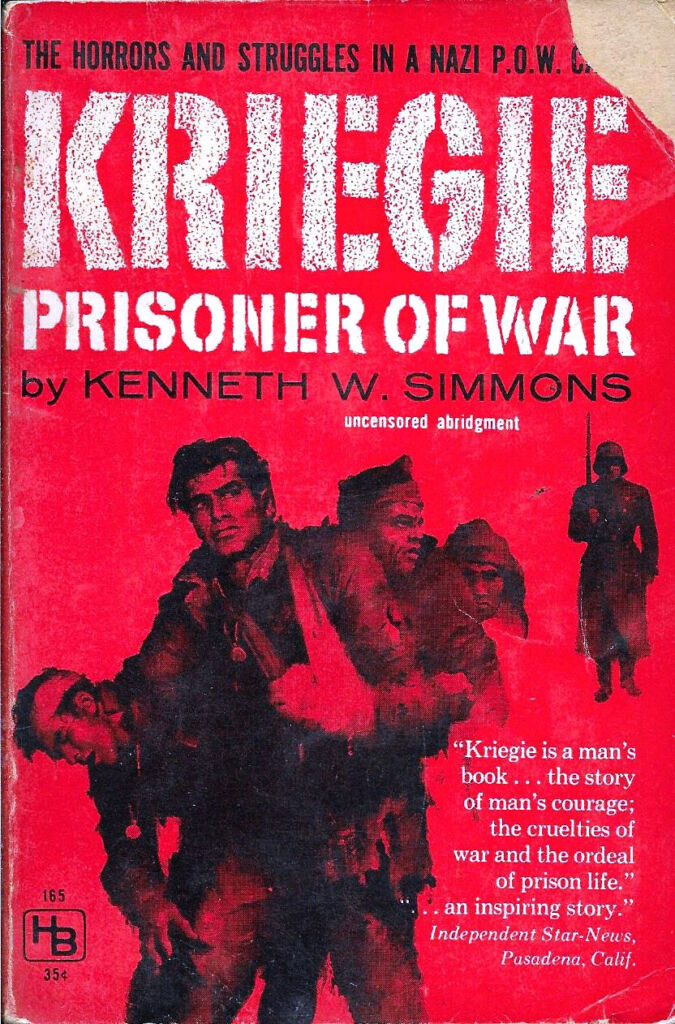
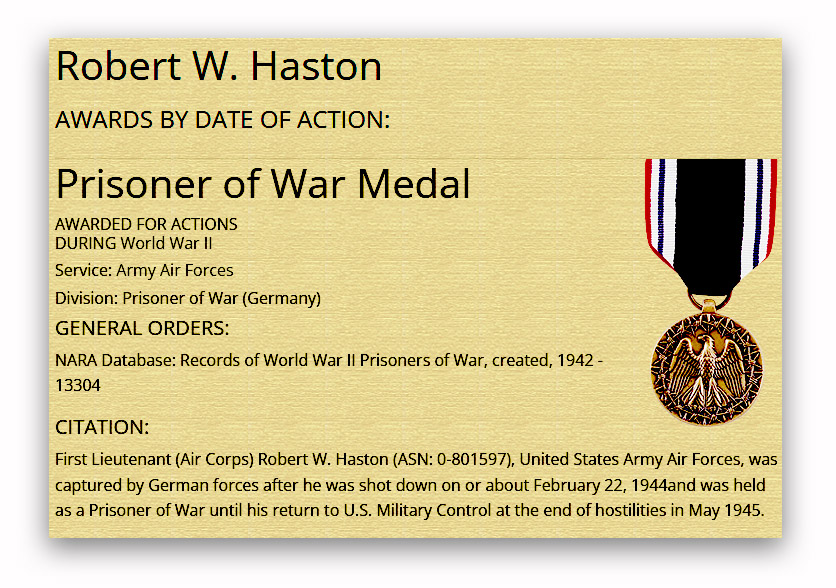
Stalag Luft III - POW Camp Featured in "The Great Escape"
The classic movie “The Great Escape” was based on an escape attempt that occurred at Stalag Luft III shortly before Bob Haston arrived at that same POW camp.
If you appreciated this article, please share it with others who might also enjoy it.
